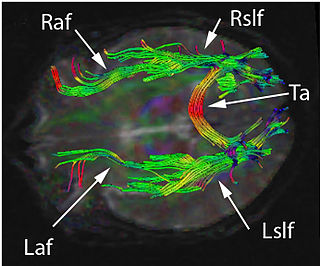 W
WSpeech-language pathology is a field of expertise practiced by a clinician known as a speech-language pathologist (SLP) or a speech and language therapist, both of whom may be known by the shortened description, speech therapist. Speech-language pathology is considered a "related health profession" or "allied health profession" along with audiology, optometry, occupational therapy, rehabilitation psychology, physical therapy, behavior analysis and others.
 W
WThe American Speech–Language–Hearing Association (ASHA) is a professional association for speech–language pathologists, audiologists, and speech, language, and hearing scientists in the United States and internationally. It has more than 197,856 members and affiliates.
 W
WAnomic aphasia is a mild, fluent type of aphasia where individuals have word retrieval failures and cannot express the words they want to say. Anomia is a deficit of expressive language. Anomia is a symptom of all forms of aphasia, but patients whose primary deficit is word retrieval are diagnosed with anomic aphasia. Some level of anomia is seen in all of the aphasias. Individuals with aphasia who display anomia can often describe an object in detail and maybe even use hand gestures to demonstrate how the object is used, but cannot find the appropriate word to name the object. Patients with anomic aphasia have relatively preserved speech fluency, repetition, comprehension, and grammatical speech.
 W
WAugmentative and alternative communication (AAC) encompasses the communication methods used to supplement or replace speech or writing for those with impairments in the production or comprehension of spoken or written language. AAC is used by those with a wide range of speech and language impairments, including congenital impairments such as cerebral palsy, intellectual impairment and autism, and acquired conditions such as amyotrophic lateral sclerosis and Parkinson's disease. AAC can be a permanent addition to a person's communication or a temporary aid. Stephen Hawking used AAC to communicate through a speech-generating device.
 W
WElectromagnetic articulography (EMA) is a method of measuring the position of parts of the mouth. EMA uses sensor coils placed on the tongue and other parts of the mouth to measure their position and movement over time during speech and swallowing. Induction coils around the head produce an electromagnetic field that creates, or induces, a current in the sensors in the mouth. Because the current induced is inversely proportional to the cube of the distance, a computer is able to analyse the current produced and determine the sensor coil's location in space.
 W
WForkhead box protein P2 (FOXP2) is a protein that, in humans, is encoded by the FOXP2 gene. FOXP2 is a member of the forkhead box family of transcription factors, proteins that regulate gene expression by binding to DNA. It is expressed in the brain, heart, lungs and digestive system.
 W
WHyperlexia is a syndrome characterized by a child's precocious ability to read. It was initially identified by Norman E. Silberberg and Margaret C. Silberberg (1967), who defined it as the precocious ability to read words without prior training in learning to read, typically before the age of 5. They indicated that children with hyperlexia have a significantly higher word-decoding ability than their reading comprehension levels. Children with hyperlexia also present with an intense fascination for written material at a very early age.
 W
WThe Royal College of Speech and Language Therapists is the professional body for speech and language therapists in the UK and a registered charity. It was established on 6 January 1945 to promote the study of speech therapy in the UK, to seek improvement and maintain a high standard of knowledge and to unite all members of the profession. The RCSLT’s current patron is the Countess of Wessex. The RCSLT has offices in Edinburgh, Belfast, Cardiff and London..
 W
WSpeech-generating devices (SGDs), also known as voice output communication aids, are electronic augmentative and alternative communication (AAC) systems used to supplement or replace speech or writing for individuals with severe speech impairments, enabling them to verbally communicate. SGDs are important for people who have limited means of interacting verbally, as they allow individuals to become active participants in communication interactions. They are particularly helpful for patients suffering from amyotrophic lateral sclerosis (ALS) but recently have been used for children with predicted speech deficiencies.
 W
WSpeech repetition occurs when individuals speak the sounds that they have heard another person pronounce or say. In other words, it is the saying by one individual of the spoken vocalizations made by another individual. Speech repetition requires the person repeating the utterance to have the ability to map the sounds that they hear from the other person's oral pronunciation to similar places and manners of articulation in their own vocal tract.
 W
WTongue thrust is a pseudo-pathological name of what is either considered a normal adaptive lip seal mechanism, whereby normal nasal breathing or normal swallowing can occur. Or, it is seen as an oral myofunctional disorder - a tongue muscle pattern that is perceived as clinically abnormal and in which the tongue protrudes anteriorly to seal otherwise incompetent lips.